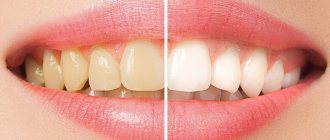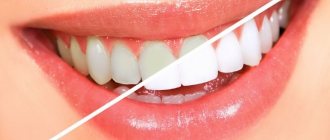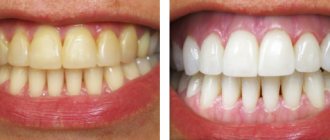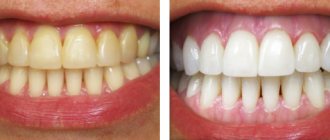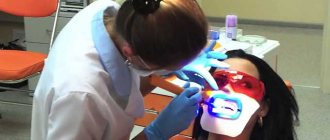Several decades ago, coated metal crowns were very widely used to restore missing teeth. But even today, despite the rich history, considerable “age” and the presence of a large number of more modern analogues, they are still often installed for patients in dental clinics. Let's look at what makes them special and in what situations their fixation is indicated.
Structural features
Any coated metal crown is a one-piece construction. Previously, they were produced according to a standard sample, and then the doctor had to “adjust” the system to the characteristics of the patient’s oral cavity. Of course, this was difficult to do. Today the situation is different - all prostheses are made exclusively from individual casts, so little or no time is spent on adjustments.
The main advantage of metal systems is the variety of choices. Taking into account his financial capabilities and personal wishes, a person can order the production of units with lining, with or without coating. If you need to make a dental bridge, then the artificial teeth are not soldered together, but the system is immediately made in the form of a single, aesthetic row. This completely eliminates the presence of interdental spaces in which food accumulates.
Example No. 2
A young beautiful girl is unhappy with her smile, but her financial condition does not allow her to correct the situation with veneers.
Using a color scale, the desired shade was selected and composite teeth whitening was performed. The thickness of artificial enamel is only 0.3-0.5 mm
Patient's smile after composite teeth whitening.
Classification
If one or several molars are destroyed or removed at once, the following can be used:
- crowns coated with various metal compounds;
- metal prostheses without coating;
- lined systems, the outer layer of which is formed of plastic or ceramics.
The metals used in the manufacture of coated dentures can be different. Among them:
- titanium;
- gold;
- silver;
- platinum;
- cobalt and chromium.
All of them are characterized by high biological compatibility and stability, do not cause unpleasant taste and can be used for a long time. But, as practice shows, most patients who decide to install metal devices with coating want to have gold teeth made for them. This is explained by their “expensive” appearance, high strength and maximum hygiene (dental plaque is not deposited on the gold surface and pathogenic bacteria do not multiply).
Comments
Is it possible to immediately do restoration after regular whitening if you are not satisfied with the result?
Svetlana (02.10.2020 at 22:54) Reply to comment
- To eliminate serious color pigmentation, spots, as well as to correct other defects, doctors often combine methods of classical and restorative bleaching. If this is indicated, the classic enamel lightening is first carried out, after which the teeth are given time to recover and strengthen, and after 2-4 weeks restorations are performed.
Editorial staff of the portal UltraSmile.ru (05.10.2020 at 09:14) Reply to comment
Write your comment Cancel reply
Indications and contraindications for installation
Metal appliances are usually made when missing molars need to be restored. They cope well with high chewing loads and last a very long time.
Their installation is also indicated in the following situations:
- in order to prevent further abrasion of damaged units;
- to increase the reliability of fixation of removable dentures;
- to recreate the natural shape of a partially destroyed natural crown;
- in the absence of one/several teeth;
- if it is necessary to replace worn-out dental devices that were manufactured several years ago.
They can also be considered as supporting units if a dental bridge is planned for the upper or lower jaw.
As for contraindications, the list is not very long:
- cancer diseases;
- bruxism;
- malocclusion, subject to mandatory preliminary correction;
- increased abrasion of units of the opposite jaw;
- severe periodontal disease, periodontitis;
- osteoporosis, osteomyelitis of the bone tissue of the jaws.
Standard whitening and restoration methods: what's the difference?
Dentists carry out laser, chemical, lamp and cosmetic whitening, where hydrogen or carbamide peroxide in different concentrations is used as the main active ingredient that corrodes the color pigment. But there are patients for whom the service is not suitable due to contraindications, and for them an excellent alternative is restorative teeth whitening, which allows not only to hide unsightly shades and stains, but also to correct a number of other minor defects (chips, cracks, slight curvature and tilt of teeth , cracks).
The main differences between classic and restorative bleaching are presented in the table below.
| Classic methods | Restoration | |
| Mechanism of action | The enamel brightens by 5-12 tones (depending on the method) under the influence of a gel with peroxide applied to the teeth and activated in various ways (lamp light, chemical components, laser) | The teeth are covered with a thin layer of composite and other materials, which the doctor skillfully applies or glues to the surface of the enamel, resulting in a snow-white smile |
| Possibilities | Changing the shade of enamel, removing persistent stubborn pigment from food and after smoking. The ability to remove stains from mild forms of fluorosis and hypoplasia | Comprehensive concealment of all minor defects: stains, chips, cracks, curvature. Getting not only the desired color, but also correcting the shape and position of the tooth |
| Contraindications | Thin and sensitive enamel, multiple caries, wedge-shaped defect and erosion, severe forms of non-carious lesions | Suitable for patients for whom traditional enamel lightening methods are contraindicated |
| Preparation for the procedure | It is important to treat tooth decay and other dental diseases. It is necessary to clean the fabrics from soft and hard deposits in order to obtain an even lightening effect. Also, the enamel is pre-strengthened with fluoride or remineralizing compounds with calcium | Traditionally, diseased teeth are treated, plaque is removed, and tissue is fluoridated. Before applying materials or installing onlays, be sure to grind off a small layer of enamel so that the smile looks natural |
| Condition of teeth after the procedure | Immediately after the procedures, tissue sensitivity increases. There is a reaction to cold, hard and hot foods | A layer of restoration materials protects hard tissues from any external influence |
| Durability | 2-4 years, provided that the patient diligently maintains the result, follows a “white” diet, carefully carries out oral hygiene, and gives up smoking | A smile can maintain its beauty for 5-10 years or more. However, some artificial materials cannot be stained by food. |
| Price | From 8,000 to 30,000 rubles for both rows of front teeth. The most inexpensive method is chemical. Expensive – laser and lamp technologies (for example, ZOOM). |
|
How to install sprayed crowns
Spray-coated metal dentures can be fixed to both the front and chewing teeth. If the smile area is to be restored, it is recommended to give preference to white products coated with zirconium. They look better than others against the background of their natural “neighbors.”
When working with molars, structures coated with other alloys can be used. This is explained by the fact that they are not noticeable to others, but at the same time they are reliable and durable.
The dental appliance installation process includes four basic steps:
- Preparatory activities.
- Preparation of a damaged natural crown.
- Taking impressions.
- Installation.
Each of them is very important and takes a lot of time.
Preparatory activities
First, the dentist carefully examines the patient’s oral cavity and talks with him. He finds out the client’s wishes and checks whether he has any contraindications to the use of metal prostheses.
Then he takes pictures, studies them and proceeds to depulpation - removal of the dental nerve and cleaning of the canals. This procedure is necessary to prevent pain from occurring in the treated tooth in the future. After all, then you will have to remove the crown, treat pulpitis and make a new dental prosthesis, and this is expensive and troublesome.
Stump formation or preparation
To give the remaining tooth the desired shape, it is processed in a certain way. At his discretion, the doctor can use the following preparation methods:
Air with abrasive. This method is suitable if you need to remove a small outer layer. A mixture of air and abrasive powder is applied to the tooth under high pressure. Eventually, the outer covering of the teeth is removed.- Laser. Innovative laser equipment is used, which carefully processes the tooth surface and removes its excess. In this case, the tooth does not heat up. Consequently, burns of soft tissues and mucous membranes are completely excluded. Chips do not appear on the molar.
- Ultrasound. Preparation using this method is also painless. The destroyed crown is carefully processed, giving it the required shape. The pulp does not overheat during operation.
The doctor always decides which method to prefer, based on the characteristics of the clinical situation.
Taking impressions
When the stump is prepared, the patient is invited to take impressions. This procedure is absolutely painless. The doctor applies a special gel to a special plate, then carefully places it on a row and asks the patient to bite down on the device.
Then he carefully removes the resulting impression and immediately transfers it to the dental laboratory. Based on it, an individual metal prosthesis with coating is made.
Installation
Before the crown is finally installed, the patient is invited to try on the manufactured system. If any discrepancies are found, the device is adjusted and re-fitted. Continue this way until a perfect fit is achieved.
Afterwards, the crown is sprayed and fixed with permanent cement. Immediately after the glue hardens, a person can use his new tooth as if it were his own. At first, the presence of an artificial unit in the mouth often causes unusual sensations, but they quickly pass.
Example No. 1
Before her wedding, a young girl tried to whiten her teeth using conventional methods, but she was not happy with the result.
We selected the appropriate shade using computer modeling
and performed composite whitening in 3 hours.
A new snow-white smile will forever remain in your wedding photos.
Pros and cons of prosthetics
Spray-coated metal crowns are quite popular today. More often than others, people over 50 years of age decide to install them. Among their advantages:
- service life more than ten to fifteen years;
- resistance to increased loads;
- affordable cost (they cost much less than the well-known metal ceramics);
- fast production;
- easy installation;
- resistance to erosion;
- high strength (chips and cracks do not appear on the surface);
- hygiene (fit as closely as possible to the gums, which eliminates the proliferation of pathogens and the occurrence of inflammatory diseases of the mucous membranes of the oral cavity).
Of course, they also have disadvantages. This refers to the lack of aesthetics for prosthetics in the smile area (you can choose more beautiful substitutes) and the need for mandatory preparation.
Example No. 4
Patient K. dreamed of a snow-white smile all her life. Before her 50th birthday, she wanted to fulfill her dream, but the question arose - either have a party or get her teeth done. Composite teeth whitening made it possible to organize a big party and amaze guests with a dazzling smile.
Composite teeth whitening
– an excellent alternative to chemical bleaching. Allows you to quickly and inexpensively get the desired result. In terms of cost, composite whitening of the 8 upper teeth costs approximately the same as ZOOM whitening.
Aesthetic restoration specialists NIK Dental Guru
Photos of Ruzmetova, Elizarova and Khabiev
Competent care
If you properly care for metal dentures, they will last a very long time. Here are the rules that the patient must adhere to after fixation:
- Do not eat very hard foods (nuts, etc.).
Use high-quality dental floss on a regular basis. It is important to promptly clean the interdental spaces from food debris.- In the morning and evening, rinse your mouth with antibacterial compounds, self-prepared saline or soda solutions.
- Brush your teeth at least twice a day, and preferably after every meal. The brush should be of medium hardness and made of artificial bristles.
- Minimize smoking. The fact is that tobacco smoke causes the prosthesis to turn an unsightly gray color.
If the restored unit becomes mobile, the gums at its base become inflamed, you should immediately make an appointment with the dentist. The doctor will conduct the necessary diagnostics and tell you what to do to eliminate unpleasant symptoms.
Example No. 3
A young aspiring singer needs a snow-white smile, but there is no time or money for a serious smile change. Composite teeth whitening helped her continue her career.
Carrying out the procedure in a dental clinic
Dental treatment in a dental clinic is much more effective than at home.
Before proceeding with the manipulation, the doctor carefully cleans the dental crowns from hard stone and soft plaque. Due to this, the fluoridated gel adheres better to the enamel and penetrates into its deeper layers. Afterwards, the work area is isolated from saliva. This is very important and a person is not able to do this on his own. The dentist then uses fluoride varnish. He carefully distributes it over all surfaces, making sure that not a single area is left untouched. Until the solution dries, the person sits with his mouth open.
An experienced dentist knows exactly how much varnish to use and how to apply it correctly. Therefore, the patient does not risk anything. He can be confident in the effectiveness of the therapy.
Fluoridation of teeth during pregnancy
During the period of bearing a child, most of all nutrients and minerals from a woman’s body go to the formation of the skeleton and muscle tissue of the unborn baby. Due to calcium deficiency during pregnancy, tooth enamel is destroyed, so fluoridation during this period is very useful. However, before applying fluoride to your teeth, you should have your mouth examined and consult an experienced dentist.
It is important to remember that severe toxicosis is the main contraindication to the procedure, so it is best to plan a trip to the dentist for the 2-3 trimester, when the pregnant woman’s health improves. During breastfeeding, the fluoridation procedure will also not be superfluous.
Why coat your teeth with fluoride?
So what does fluoridation do? This method can be used by both adults and children to strengthen enamel and improve its strength properties.
Fluoride is an important element that not only makes enamel stronger, but also prevents the rapid proliferation of bacteria. Among other things, the resistance of teeth to an acidic environment increases, which means their surface becomes less susceptible to various types of destructive substances.
The fluoridation procedure must be repeated annually - then the teeth will be reliably protected from caries and not subject to premature destruction; The gradual leaching of calcium will stop, making the enamel stronger.


